Zoysia grass is a warm-season grass known for its drought-resistant qualities, making it an excellent choice for homeowners looking for low-maintenance and water-conserving options for their lawns. It has both pros and cons that should be considered before choosing it for your lawn.
Key Takeaways:
- Zoysia grass requires minimal maintenance and is resistant to weeds, insects, and diseases.
- It is a durable grass that can withstand heavy foot traffic and recover quickly from damage.
- Zoysia grass has a high tolerance for drought conditions and can survive with minimal watering.
- It has a soft, fine texture and a visually appealing appearance.
- Zoysia grass can choke out weeds due to its aggressive spreading nature.
Low Maintenance and Weed Resistance
One of the significant advantages of Zoysia grass is its low maintenance requirements, making it a popular choice for homeowners who want a lush, green lawn without spending hours on upkeep. This warm-season grass has a natural resistance to weeds, insects, and diseases, reducing the need for excessive herbicides and pesticides. With Zoysia grass, you can enjoy a beautiful lawn without the constant hassle of fighting off unwanted invaders.
In addition to its weed resistance, Zoysia grass is known for its durability. It can tolerate heavy foot traffic, making it perfect for families with active children or pets. This grass variety has a remarkable ability to recover quickly from damage, ensuring that your lawn stays green and healthy even in high-traffic areas. With Zoysia grass, you can have peace of mind knowing that your lawn will remain vibrant and resilient, no matter how much it’s used.

To maintain a healthy and vibrant lawn, regular mowing and proper watering are essential. However, one of the standout features of Zoysia grass is its exceptional drought tolerance. This grass can survive with minimal watering, making it an excellent choice for regions prone to water shortages or restrictions. It’s not only environmentally friendly but also cost-effective, as it helps reduce water consumption without sacrificing the beauty of your lawn. With Zoysia grass, you can enjoy a lush, green lawn while doing your part to conserve water.
| Pros | Cons |
|---|---|
|
|
While Zoysia grass offers numerous benefits such as low maintenance, weed resistance, and drought tolerance, it’s important to consider its drawbacks. The seasonal color changes of Zoysia grass mean that it may turn brown during dormant periods, which can last for several months. Additionally, it doesn’t tolerate shade well and may struggle to grow in areas with heavy tree cover.
Another factor to consider is the invasive nature of Zoysia grass. Its aggressive spreading can result in conflicts with neighbors if proper containment measures are not taken. Thatch problems, which require regular de-thatching and aeration, can also be a concern. Moreover, Zoysia grass is a slow grower, taking several years to fill out and reach the desired density. It’s also challenging to establish from seed in cooler soil temperatures, often requiring the use of plugs or sod.
Before deciding if Zoysia grass is the right choice for your lawn, weigh the pros and cons. Consider factors such as your climate, sun exposure, and desired maintenance level. Ultimately, Zoysia grass offers a beautiful, low maintenance lawn option, but it’s crucial to make an informed decision based on your specific needs and preferences.
Durable and Foot Traffic Resistant
In addition to its drought resistance, Zoysia grass is known for its durability, making it an excellent option for high-traffic areas such as front yards and play areas. This grass variety can withstand heavy foot traffic and recover quickly from damage, making it an ideal choice for families with children or pets.
Zoysia grass has a vigorous growth habit, spreading through above-ground stolons and below-ground rhizomes. This growth pattern helps it form a dense turf that can withstand the wear and tear of constant foot traffic. Whether it’s a lively game of catch or regular footfall, Zoysia grass bounces back quickly, maintaining a lush appearance and providing a comfortable surface for outdoor activities.
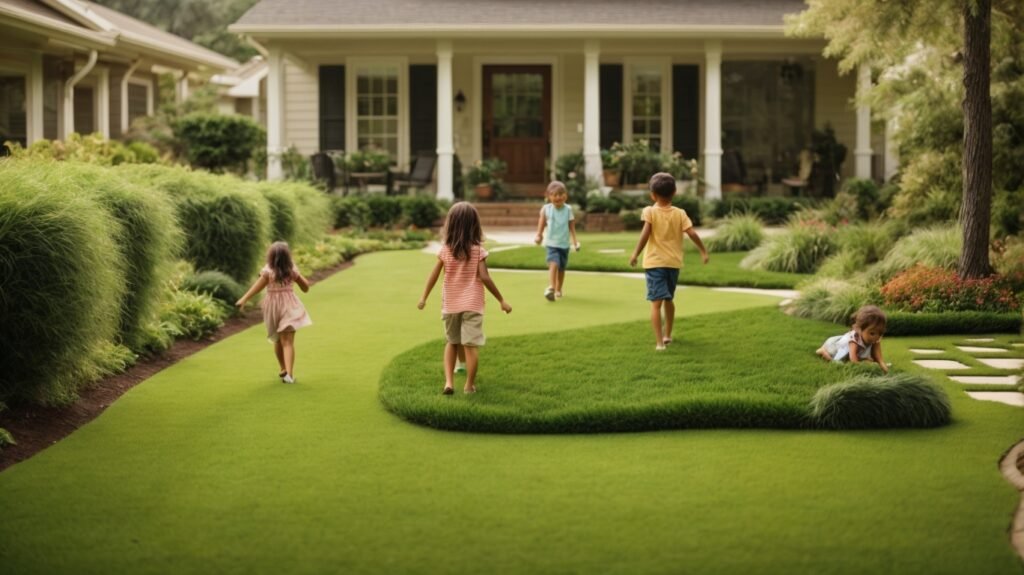
Furthermore, the durability of Zoysia grass is complemented by its ability to tolerate different soil types and subpar conditions. It can adapt to a range of soil pH levels, including acidic or alkaline soils, and grow well in both sunny and partially shaded areas. This versatility makes Zoysia grass a reliable choice for homeowners seeking a resilient and attractive lawn.
| Benefits of Zoysia Grass: | Considerations: |
|---|---|
|
|
Considering the durability and foot traffic resistance of Zoysia grass, it is a top contender for homeowners who value a low-maintenance lawn that can withstand heavy use. However, it is essential to weigh the pros and cons of this grass variety to make an informed decision that aligns with your specific needs and preferences.
Exceptional Drought Resistance
With increasing concerns about water conservation, homeowners are turning to Zoysia grass for its exceptional drought resistance, allowing them to maintain a beautiful lawn while minimizing water usage. This warm-season grass has proven its ability to thrive in dry conditions, making it an attractive choice for those living in regions with limited water resources.
One of the key advantages of Zoysia grass is its ability to survive with minimal watering. It has a deep root system that helps it access water from deep within the soil, reducing the need for frequent irrigation. This makes it an excellent option for homeowners who want to conserve water without compromising the aesthetics of their lawn.
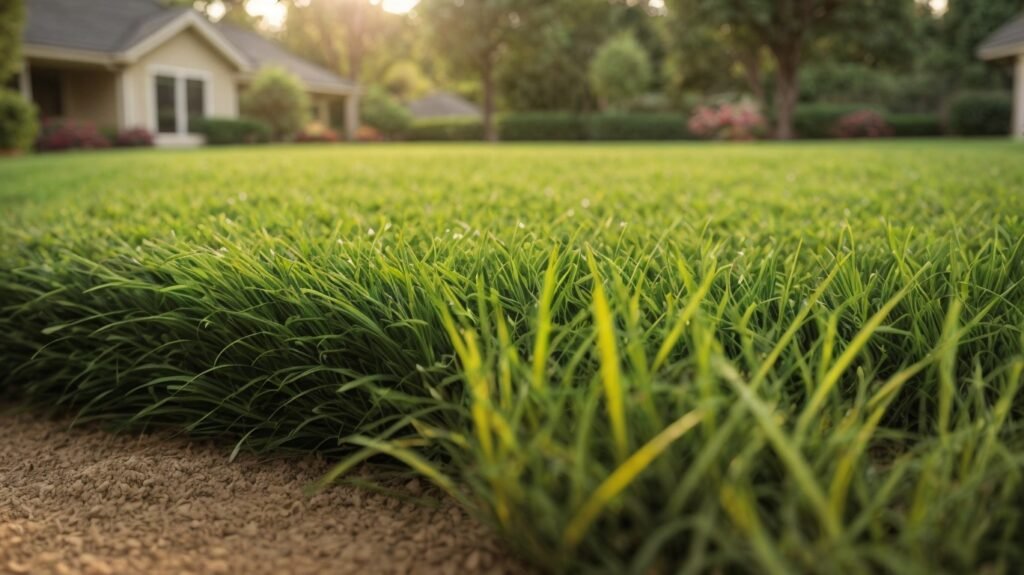
Moreover, Zoysia grass has the remarkable ability to stay green even during extended periods of drought. While other grass varieties may turn brown and go dormant in dry conditions, Zoysia can maintain its color and lush appearance, adding beauty to any landscape. Its resilience in the face of water scarcity is a testament to its exceptional drought resistance.
By choosing Zoysia grass, homeowners can enjoy the benefits of a drought-resistant lawn that enhances the curb appeal of their property, requires less water, and withstands dry conditions. With its exceptional drought resistance, this grass variety offers an eco-friendly solution to maintaining a lush and vibrant lawn in water-stressed areas.
| Pros | Cons |
|---|---|
|
|
Pleasant Appearance and Texture
Not only is Zoysia grass drought-resistant, but it also offers an aesthetically pleasing lawn with its soft texture and vibrant green color. Its fine blades create a velvety carpet-like look that adds beauty to any landscape. Whether you’re walking barefoot or picnicking on your lawn, the softness of Zoysia grass provides a comfortable and enjoyable experience. Its dense growth pattern gives it a lush and luxurious appearance, making it a popular choice for homeowners who want their lawns to stand out.
Zoysia grass is known for its exceptional visual appeal, with its uniform color creating a visually appealing landscape. Whether you’re hosting outdoor parties or simply relaxing in your backyard, the vibrant green hue of Zoysia grass will make your outdoor space look inviting and well-kept. It creates a picturesque backdrop for any outdoor activities and enhances the overall aesthetics of your property.
Table 1: Comparison of Zoysia Grass Varieties
| Variety | Appearance | Texture | Growth Rate |
|---|---|---|---|
| Zoysia japonica | Dense | Medium | Slow to Moderate |
| Zoysia matrella | Fine | Soft | Slow |
| Zoysia tenuifolia | Lacy | Delicate | Slow |
When it comes to texture, Zoysia grass is a clear winner. Its fine blades are gentle to the touch and create a velvety feel, making it an ideal surface for outdoor activities. Whether you’re playing catch with your kids or simply enjoying a leisurely stroll in your yard, the softness of Zoysia grass adds an extra level of comfort to your outdoor experience. Its thick growth also provides a cushioned surface, offering a pleasant sensation underfoot.

Besides its soft texture, Zoysia grass is also known for its resilience. Even after heavy use or foot traffic, it has the ability to quickly recover and retain its beauty. This durability is especially beneficial for families with children or pets who love spending time in the yard. No matter how much activity your lawn sees, Zoysia grass will always bounce back, maintaining its lush appearance.
Weed Control and Salt Tolerance
Along with its ability to resist weeds, Zoysia grass can naturally suppress weed growth, keeping your lawn looking pristine and weed-free. Its aggressive spreading nature allows it to choke out weeds, minimizing the need for herbicides or manual weed removal. This not only saves you time and effort but also reduces the use of potentially harmful chemicals in your yard.
In addition to its weed control properties, Zoysia grass is also known for its salt tolerance. This makes it an ideal choice for coastal areas or regions with high salt levels in the soil. Unlike other grass varieties that may struggle to thrive in salty conditions, Zoysia grass can withstand and even thrive in these challenging environments. So if you live near the coast or have saline soil, Zoysia grass can provide you with a lush green lawn without the worry of salt damage.
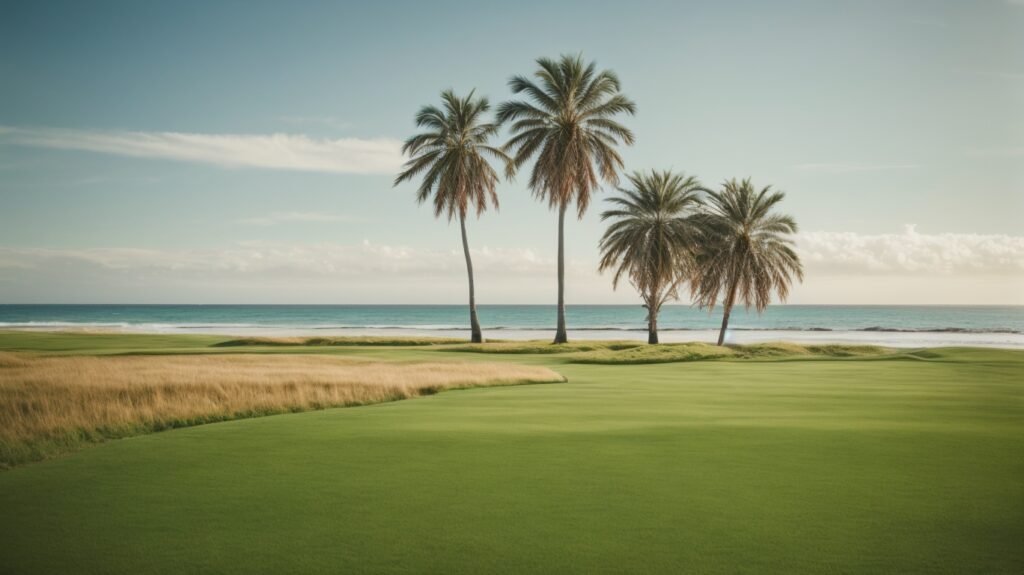
Table 1: Comparison of Zoysia Grass’ Weed Control and Salt Tolerance
| Aspect | Weed Control | Salt Tolerance |
|---|---|---|
| Rating | Excellent | High |
| Advantages | – Naturally suppresses weed growth | – Thrives in high salt levels |
| Benefits | – Saves time and effort on weed removal | – Ideal for coastal areas with saline soil |
With Zoysia grass, you can enjoy a beautifully manicured lawn that is both weed-free and tolerant of salt exposure. Its natural ability to control weed growth and thrive in salty conditions sets it apart from other grass varieties. So if you’re looking for a low-maintenance and resilient option for your lawn, Zoysia grass is worth considering.
Considerations: Seasonal Color and Shade Intolerance
While Zoysia grass offers many benefits, it’s important to note that it may turn brown during dormant periods and may struggle to grow in areas with heavy tree cover. This means that if you prefer a lush green lawn year-round, Zoysia grass may not be the best choice for you. The dormant periods can last for several months, and during this time, the grass may appear brown or yellowish in color. However, it’s worth noting that Zoysia grass will regain its green color once favorable growing conditions return.
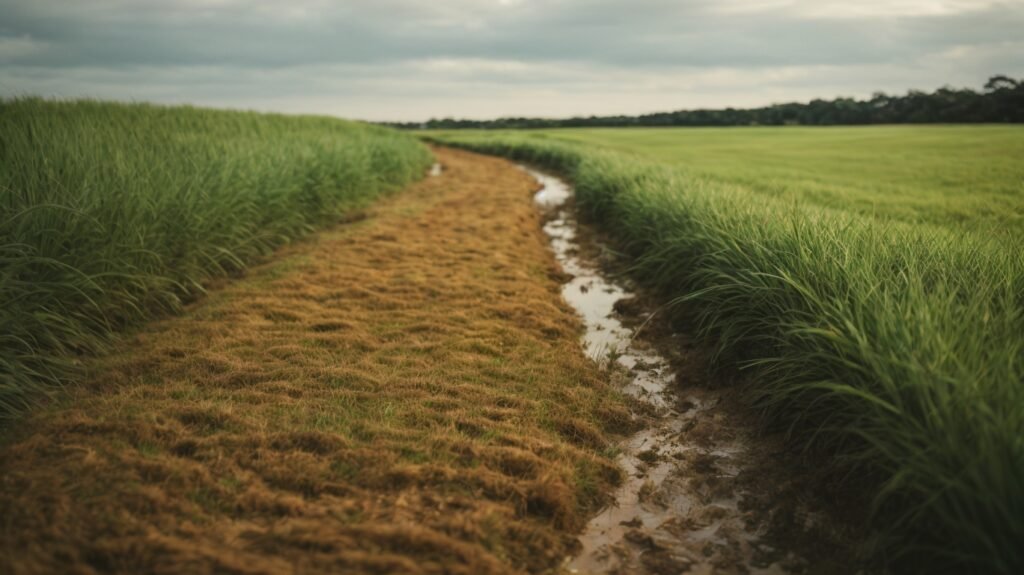
Additionally, Zoysia grass requires full sun to thrive and does not tolerate shade well. If your lawn is shaded by large trees or structures, you may experience difficulty in establishing and maintaining Zoysia grass. The lack of sunlight can hinder its growth, leading to patchy areas or thinning of the grass. In shaded areas, it’s recommended to consider alternative grass varieties that are better adapted to low-light conditions.
Despite these considerations, many homeowners still choose Zoysia grass for its numerous advantages. Its low maintenance requirements, drought resistance, and ability to withstand heavy foot traffic make it an attractive option. Just be aware of the potential challenges of seasonal color changes and shade intolerance when making your decision.
| Pros | Cons |
|---|---|
|
|
Potential Challenges: Invasive Nature and Thatch Problems
While Zoysia grass can create a lush lawn, its aggressive spreading nature can sometimes be considered invasive, requiring proper maintenance to prevent it from encroaching on neighboring areas. This grass has a tendency to grow aggressively, sending out runners or stolons that can quickly take over the surrounding space. Regular monitoring and containment measures are essential to prevent Zoysia grass from becoming a nuisance in your yard.
In addition to its invasive nature, Zoysia grass can also develop thatch problems. Thatch refers to the layer of dead grass, roots, and stems that accumulates above the soil. A thin layer of thatch is normal and can even provide some benefits, such as insulation and moisture retention. However, if the thatch layer becomes too thick, it can prevent water, air, and nutrients from reaching the soil, leading to an unhealthy lawn.

To combat thatch buildup, regular de-thatching and aeration are necessary. De-thatching involves removing the excess thatch layer using a specialized rake or machine. Aeration, on the other hand, involves creating small holes in the soil to allow for better penetration of water, air, and nutrients. These maintenance practices help promote a healthy root system and prevent thatch problems from compromising the overall health and appearance of your Zoysia grass lawn.
| Challenges | How to Address |
|---|---|
| Invasive Nature | Regular monitoring and containment measures |
| Thatch Problems | Regular de-thatching and aeration |
Slow Establishment and Difficulty in Establishment
It’s important to note that Zoysia grass is a slow grower and may take several years to fill out and reach the desired density, requiring patience and potentially higher upfront costs for establishment. This grass variety is known for its slow establishment process, especially when grown from seed in cooler soil temperatures. The limited germination rate and slow growth make it difficult to achieve a lush Zoysia lawn solely from seeding. As a result, many homeowners opt for quicker and more reliable methods such as plugs or sod, which can be more expensive but guarantee a faster and more successful establishment.
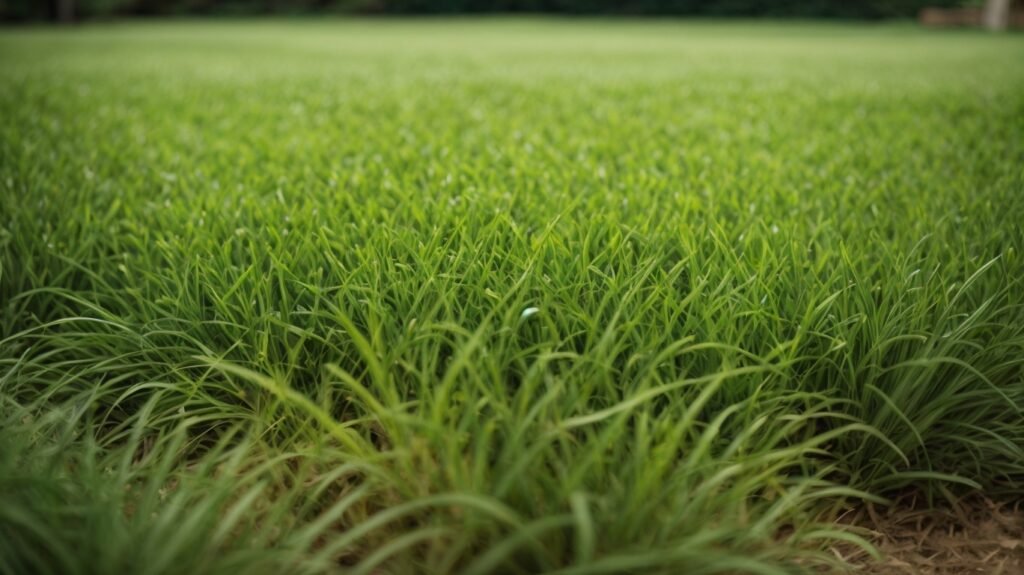
Zoysia grass is known for its dense growth pattern and ability to fill in bare areas and spread laterally with time. However, the slow pace of growth can be frustrating for those seeking instant results. It’s essential to have realistic expectations and understand that the establishment phase may require extra care and attention.
Patience and Diligence Pay Off
During the establishment period, it’s crucial to provide the Zoysia grass with adequate water, sunlight, and nutrients to promote healthy growth. Regular watering is essential to aid in root development and encourage the grass to spread. Fertilizing with a balanced formula specifically designed for Zoysia grass will also help expedite the establishment process. While the initial investment of time, effort, and potentially higher costs might seem overwhelming, the long-term benefits of having a lush, drought-resistant Zoysia lawn are worth it.
| Pros | Cons |
|---|---|
|
|
While Zoysia grass has its challenges in terms of establishment, it is a desirable choice for homeowners seeking a low-maintenance, drought-resistant lawn. The key is to understand and embrace its slow growth nature, and with patience and proper care, you’ll be rewarded with a dense, resilient, and beautiful Zoysia lawn.
Choose Zoysia grass if you’re willing to invest the time and effort into establishing it properly, or consider other grass varieties if you prefer a faster-growing option. Always weigh the pros and cons to make an informed decision that suits your specific lawn needs and preferences.
Conclusion
In conclusion, Zoysia grass offers numerous benefits such as low maintenance, drought resistance, and weed control. Its ability to withstand heavy foot traffic and its quick recovery from damage make it a durable choice for lawns. Additionally, Zoysia grass has exceptional drought tolerance, surviving with minimal watering.
Not only does Zoysia grass offer practical advantages, but it also has aesthetic appeal. Its soft, fine texture and visually pleasing appearance create a beautiful landscape for your lawn.
However, it is important to consider the cons of Zoysia grass as well. It undergoes seasonal color changes and may turn brown during dormant periods, which can last for several months. Additionally, it struggles to grow under heavy shade and may require extra care in such areas. Zoysia grass is known for its aggressive spreading nature, which can be invasive and potentially cause issues with neighbors. Thatch problems may also arise, necessitating regular de-thatching and aeration. Furthermore, establishing Zoysia grass from seed in cooler soil temperatures can be challenging, often requiring the use of plugs or sod.
Consider these factors carefully to determine if Zoysia grass aligns with your lawn goals and preferences. Although it offers numerous benefits, it is essential to weigh the pros and cons before making a decision. The resilient and low-maintenance nature of Zoysia grass may be the perfect fit for your lawn, but be prepared to address the challenges it presents.
FAQ
Is Zoysia grass low maintenance?
Yes, Zoysia grass requires minimal maintenance and is resistant to weeds, insects, and diseases.
Can Zoysia grass withstand heavy foot traffic?
Absolutely! Zoysia grass is a durable grass that can withstand heavy foot traffic and recover quickly from damage.
How well does Zoysia grass tolerate drought conditions?
Zoysia grass has a high tolerance for drought conditions and can survive with minimal watering.
What does Zoysia grass look like?
Zoysia grass has a soft, fine texture and a visually appealing appearance.
Does Zoysia grass control weeds?
Yes, Zoysia grass can choke out weeds due to its aggressive spreading nature.
Is Zoysia grass suitable for coastal areas?
Absolutely! Zoysia grass is tolerant of high salt levels, making it suitable for coastal areas.
Does Zoysia grass stay green all year?
No, Zoysia grass may turn brown during dormant periods, which can last for several months.
Can Zoysia grass grow in shaded areas?
Unfortunately, Zoysia grass does not tolerate shade well and may struggle to grow in areas with heavy tree cover.
Is Zoysia grass invasive?
Yes, Zoysia grass has an aggressive spreading nature and can be considered invasive, potentially causing problems with neighbors.
Does Zoysia grass require regular de-thatching?
Yes, thatch can be an issue with Zoysia grass, requiring regular de-thatching and aeration.
How long does it take for Zoysia grass to establish?
Zoysia grass is a slow grower and can take several years to fill out and reach the desired density.
How is Zoysia grass usually established?
Zoysia grass is difficult to establish from seed in cooler soil temperatures and is often planted using plugs or sod, which can be expensive.




